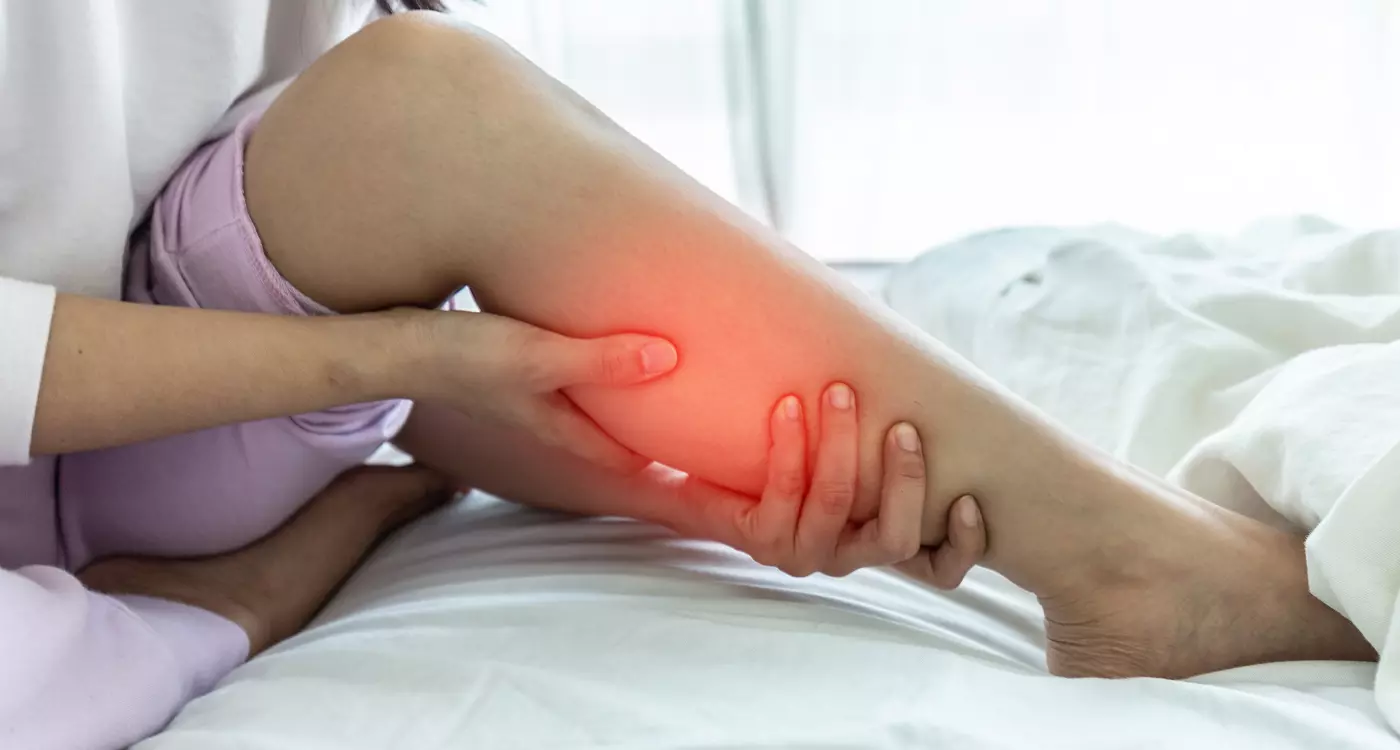Leg pain can disrupt your day, interfere with physical activity, and even impact your sleep. Whether it stems from standing too long, overexertion during exercise, or an underlying medical condition, finding the right leg pain treatment is essential for leading a comfortable, active life.
By exploring the causes of leg pain, effective treatments, and preventive measures, this article will give you the tools you need to banish leg pain and keep your muscles happy and healthy.
What Causes Leg Pain?
Knowing the cause of your leg pain can guide you toward the most effective treatment. Below are a few common causes of leg pain you should be aware of.
1. Muscle Strain or Cramp
Overuse, poor posture, or sudden, intense physical activity can strain your leg muscles, leading to soreness or cramping. “Charley horses,” or muscle cramps, often occur when muscles are dehydrated or fatigued.
2. Poor Circulation
Leg pain may signal poor blood flow. Conditions like deep vein thrombosis (DVT) and peripheral arterial disease (PAD) restrict blood movement, causing discomfort. If you experience prolonged ache or swelling, consult a doctor immediately.
3. Nerve Pain
Nerve-related conditions like sciatica can cause sharp, shooting pain down one or both legs. This happens when the sciatic nerve, running from the lower back to the legs, is compressed.
4. Joint or Bone Issues
Osteoarthritis, fractures, or inflammation in your joints and bones can contribute to chronic leg pain. Some people may also experience pain due to vitamin deficiencies leading to weak bones.
5. Overuse or Repetitive Strain Injuries
Repetitively engaging in the same movements—running, cycling, or squatting at the gym—can inflame tendons and muscles, leading to cumulative strain.
Understanding the root cause is the first step—next, let’s look at how to relieve this pain effectively with specific leg pain treatment in Houston.
Effective Leg Pain Treatment Options
Finding the right treatment depends on the severity and cause of your leg pain. Here are several approaches suitable for different types of pain.
1. Home Remedies for Managing Mild Leg Pain
If your pain is minor, you can often treat it at home with these remedies.
- Rest and Elevation: Rest your leg and prop it up with a pillow to reduce swelling.
- Cold Compress: Apply an ice pack for 15–20 minutes several times a day to soothe inflammation or acute pain.
- Heat Therapy: Use a heating pad for chronic pain or stiffness to promote blood flow and relaxation.
- Hydration: Drink plenty of water to avoid cramps caused by dehydration.
2. Over-the-Counter (OTC) Pain Relievers
Nonsteroidal anti-inflammatory drugs (NSAIDs), like ibuprofen or aspirin, can reduce muscle inflammation and provide temporary relief for leg pain. Be sure to follow dosage instructions and consult your doctor if pain persists.
3. Stretching and Physical Therapy
Many cases of leg pain benefit from incorporating gentle stretches into your daily routine. Physical therapists can guide you through exercises tailored to improving mobility and strength in your legs. Common techniques include foam rolling and dynamic stretches to target tight muscles.
4. Medical Treatments
- Compression Therapy: Specialized socks or wraps can improve circulation, particularly if your pain stems from varicose veins or DVT.
- Laser Therapy: Often used for nerve pain, this technology stimulates healing and reduces inflammation.
- Surgical Intervention (if needed): For fractures, DVT, or severe joint damage, sometimes surgery becomes necessary.
5. Alternative Remedies
Some people find relief from leg pain through practices like acupuncture, chiropractic adjustments, or massage. These therapies stimulate blood flow and loosen stubborn knots in your muscles.
6. Supportive Footwear and Orthotics
Poorly fitting shoes can exacerbate leg pain by misaligning your knees and hips. Invest in footwear with good arch support or custom orthotics to align your posture and reduce stress on leg joints.
No matter the method, consistency is key! Regularly implementing these treatments will offer sustained relief over time.
Tips to Prevent Leg Pain Before It Starts
Preventive care plays a crucial role in reducing recurring leg pain. Small habits can make a huge impact.
1. Maintain a Balanced Diet
Eating foods rich in calcium, magnesium, and potassium supports muscle and bone health. Leafy greens, bananas, and dairy products are great options.
2. Stay Hydrated
Dehydration is a leading cause of leg cramps. Drink at least 8 glasses of water daily—more if you’re active or live in a warm climate.
3. Incorporate Regular Exercise
Low-impact activities like walking, swimming, or yoga strengthen your legs without adding excessive stress. Remember to stretch before and after workouts to prevent stiffness.
4. Avoid Prolonged Sitting or Standing
Whether working at a desk or waiting in long lines, alternating between sitting and standing every 20–30 minutes can help improve circulation. Use anti-fatigue mats if standing for extended periods is unavoidable.
5. Pay Attention to Ergonomics
Set up your workspace or home environment with supportive furniture to maintain proper posture. Slouching can put extra strain on your legs over time.
Taking simple steps to prevent leg pain is far easier—both physically and financially—than dealing with chronic issues later.
When to Consult a Doctor
While home remedies and stretches are great for mild pain, some symptoms require professional medical attention. Seek help if you experience the following:
- Persistent swelling, redness, or warmth in your leg
- Intense, unrelenting pain
- Difficulty walking, standing, or bearing weight
- Numbness or tingling sensations
- Visible deformities or suspected fractures
Don’t wait—it’s always better to err on the side of caution when your health is involved.
Takeaway
Leg pain doesn’t have to control your life. By identifying the cause, utilizing effective treatment options, and following preventive strategies, you can stay active and pain-free. Whether it’s incorporating daily stretches or investing in proper footwear, small changes can make a big difference.
If your leg pain persists despite your best efforts, consult a healthcare professional for tailored guidance. Staying informed and proactive is the first step toward long-term relief.



